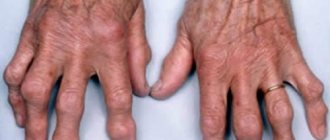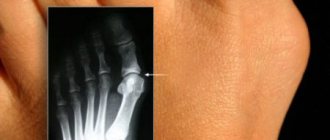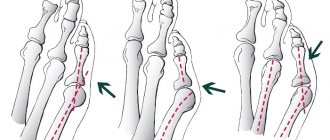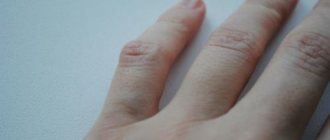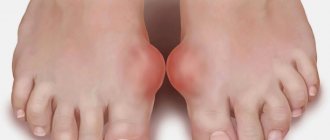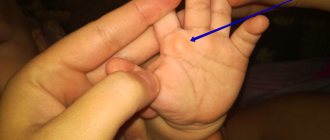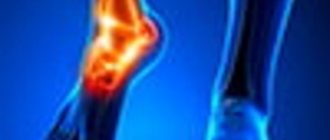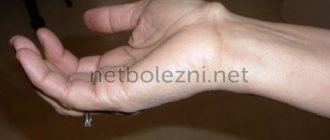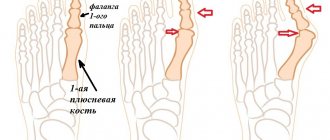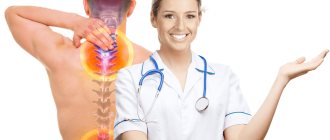General information about the disease
Arthritis of the fingers is an inflammation of the metacarpophalangeal and interphalangeal joints of the fingers. The disease occurs quite often at any age. According to statistics, women over 40 years of age are more affected by it. This is explained by the fact that, compared to men, women have a greater load on their hands and fingers. ICD-10 code for finger arthritis of unspecified origin M13.
Depending on the cause that caused it, the disease can occur only in small joints of the fingers, or can be combined with damage to large joints. The onset of the disease can be acute, subacute and chronic, but then the course in most cases becomes protracted or chronic. The exception is post-traumatic arthritis of the fingers: with proper treatment, it ends in complete recovery. But if treatment was not prescribed on time, it also takes a chronic course.
Causes of inflammation in the joints of the fingers
The causes of the disease can be different. Most often, the small joints of the fingers are affected by rheumatoid arthritis, an autoimmune (allergy to the patient’s own tissues) disease, which is based on a hereditary predisposition. The starting point for the onset of the disease is usually some kind of infection. After some time, genetically predisposed individuals develop arthritis of the fingers. In the future, other, larger joints may be affected.
Another common cause of inflammation in the small joints of the hands is psoriatic arthritis. It is also an autoimmune hereditary disease that mainly affects the joints of the fingertips (distal) with simultaneous characteristic lesions of the nails. This usually occurs against the background of existing skin manifestations of psoriasis, but sometimes symptoms of arthritis in the joints of the fingers appear first.
Quite often, arthritis of the finger joints develops with gout. The disease has a metabolic (metabolic) origin - the metabolism of uric acid salts is disrupted, they are deposited in the articular and periarticular tissues, causing an inflammatory process.
Post-traumatic arthritis of the finger joints is sometimes of an occupational nature. It develops with constant minor trauma to the hands of jewelers, seamstresses, hairdressers, etc. The inflammatory process is constantly supported by additional trauma and becomes chronic. After acute (sports, household) injuries, acute arthritis can develop, which then completely disappears.
Other types of arthritis rarely cause damage to small joints. Provoking factors that contribute to the development of arthritis in the small joints of the hands are hormonal changes (adolescence, pregnancy, menopause), stress, frequent colds and allergies, bad habits, and professional activities.
Not fatal, but dangerous
Often on certain gadgets you can find a sticker warning about the risk of developing diseases of the wrist and fingers in case of prolonged or improper use of the device. The most common is carpal tunnel syndrome, or, as computer game fans call it, Nintendo thumb syndrome. It is caused by inflammation of the tendon as a result of prolonged repetition of the same type of movements and occurs mainly in people whose activities involve working at the keyboard, as well as among video game lovers. To prevent this syndrome it is recommended:
- Don’t be too zealous when pressing the joystick or keyboard;
- After every hour of working at the computer, take a break for 10–15 minutes, and it is advisable to devote this time to warming up your wrist and fingers.
Symptoms of arthritis in the fingers
Symptoms can be different, they depend on the nature of the inflammatory process (acute, subacute, chronic), as well as on the clinical form of the underlying disease.
First signs
Swelling and aching pain are the first signs of hand arthritis
The onset of the disease is slow in most cases. There are aching pains in the hands and stiffness of movements in the morning. At first, this symptom lasts on average no more than half an hour, and then goes away. The pain is aching, constant, and its intensity increases slowly.
Less often the onset is acute. Pain appears in one or more small finger joints, accompanied by redness and swelling of the surrounding tissues. The function of the joint is impaired: it is difficult to bend and unbend, sometimes it is impossible to do this due to pain.
With the acute onset of the disease, the patient’s general condition often suffers: fever, malaise, and headache appear. If the process develops subacutely or chronically, there may be no general manifestations; changes in the affected joints may also not be too pronounced.
The most important thing to do if you experience symptoms of arthritis is to seek medical help. The sooner this happens, the greater the chance of stopping the inflammatory process at the very beginning.
Obvious symptoms
Obvious signs of chronic hand arthritis include the appearance of swelling and redness of the tissues around the affected areas of the hands, as well as the involvement of other joints in the pathological process on the same or another hand. The appearance of new foci of inflammation may be accompanied by a slight rise in body temperature, increased pain and dysfunction of the affected joints. But more often, rheumatoid exacerbations occur without general manifestations.
After some time, the inflammatory process may somewhat reduce intensity, local inflammation and general symptoms decrease. After this, the process becomes chronic. Morning stiffness of movement appears, patients note the feeling of tight gloves on their hands, which do not allow them to move. Some time after getting up in the morning and starting physical activity, this feeling decreases or even disappears. The appearance of crepitus (friction and clicking) in the affected articular joints is also characteristic.
When the patient does not receive treatment for arthritis, there is an alternation of exacerbations and remissions with constant pain and rapid formation of joint deformation (with rheumatoid arthritis) or melting of the fingertips with their shortening (with psoriatic arthritis). Arthritis of the thumb most often develops with gout, occurs with severe pain, swelling, redness, then goes away without a trace, but with frequent relapses, deformation and loss of function of the joint also develops.
Dangerous symptoms
Emergency medical attention is required if the following symptoms of finger arthritis appear:
- high body temperature (38 - 39°) for 5 or more days;
- a sharp rise in temperature, increased inflammation and pain in the joint with an already existing inflammatory process - may indicate the onset of suppuration;
- involvement of new small or large joints in the pathological process;
- the appearance of blackened tissue on the fingertips (necrosis) in psoriatic arthritis.
If such symptoms appear, you should immediately consult a doctor.
Osteoarthritis and stenosing ligamentitis
Osteoarthritis occurs due to hereditary predisposition, injury or metabolic disorders. Individual fingers can be affected: debilitating pain occurs in the area of the thumb, middle finger, or only the little finger hurts. Increased physical activity and hormonal changes in the body in women can lead to the disease. Basically, the disease begins to progress when a person is old. There are no characteristic signs as such. If the pathology progresses and there is no treatment, then the first finger of the hand and nail plates gradually begin to change their shape.
With stenotic ligamentitis, the annular ligaments of the joints are affected. Signs of this disease are:
- It is painful to bend your fingers, in some cases they remain in a bent position, and it is quite difficult to straighten them. The pain in the joints of the fingers does not go away; in this case, the disease must be treated comprehensively.
- Flexion and extension are accompanied by a characteristic click, as the ligament becomes inflamed and completely loses its elasticity. The pain in the joints of the fingers does not go away.
The main cause of vibration disease is constant exhausting work with relevant mechanisms. As a rule, the disease goes through 3 stages:
- periodically goes numb, tingling in the area of the index finger or any other finger;
- decreased sensitivity is observed;
- pain and numbness become permanent, bending the fingers becomes more difficult, and vasospasm syndrome occurs, in which the fingers completely lose sensitivity and turn white.
How dangerous is the disease?
The main danger of any type of chronic arthritis is the progression of the inflammatory process, which over time becomes degenerative-dystrophic with deformation of the limbs and disability. The longer arthritis lasts, the higher the risk of complications.
Stages of the disease
Any form of arthritis has serious complications, so you should not delay treatment.
See how easily the disease can be cured in 10-12 sessions.
Arthritis of the joints of the fingers has 4 stages of development depending on the degree of joint damage detected during instrumental examination:
- Initial stage
. If there are pronounced or minor clinical signs of inflammation, an x-ray can show signs of inflammation in the form of widening of the joint space. An ultrasound can show the presence of an increased volume of joint fluid. Symptoms can be pronounced or almost absent in the chronic course of the disease. - Progressive inflammation.
Signs of inflammation are clearly visible on x-rays and ultrasound. Articular cartilage is destroyed, and in its place loose connective tissue - pannus - is formed. The process takes on a wave-like (exacerbation-remission) or constantly progressive course. Pain and stiffness of movement increase. - Connective tissue ankylosis.
The connective tissue of the pannus becomes rough, it grows and connects the joint-forming bone surfaces with each other, as a result of which movement in the joint is limited. Fingers become deformed. - Bone ankylosis.
Instead of connective tissue, bone tissue grows in the joint, which leads to complete immobility of the joint and loss of its function.
Possible complications
If arthritis of the hands and fingers is not treated, the disease will progress. The following complications are also possible:
- development of a purulent inflammatory process with transition to the tissue surrounding the joint, development of abscesses, phlegmon and sepsis;
- necrosis of the fingertips, their shortening and inflammation of the soft tissues;
- subluxations and dislocations of small joints;
- various types of joint deformities;
- complete loss of function of the fingers and hands.
What to do during an exacerbation
You can get rid of pain from arthritis of the hands with the help of drugs from the group of non-steroidal anti-inflammatory drugs
When arthritis worsens, the joints become sharply painful, the skin over them turns red, swells, and movements in the fingers become impossible due to pain. To reduce suffering you need to:
- give your hands a slightly elevated position - this will reduce swelling;
- take any medicine from the group of non-steroidal anti-inflammatory drugs (NSAIDs) - Diclofenac, Nise, Indomethacin, Ibuprofen; this will reduce pain and inflammation;
- apply any external agent from the NSAID group - gel or ointment - to the skin over the diseased joint; emulgel Voltaren helps a lot;
- consult a doctor or call him at home.
During an exacerbation, you cannot delay visiting a doctor; it is urgent to suppress the progression of the disease. It is impossible to do this on your own.
Traditional treatment
The goal of any treatment method is to eliminate pain. If the pain is minor, there is no swelling or deformation of the phalanx of the finger, then the problem is solved in a fairly simple way: apply an elastic bandage and provide complete rest to the hand. If pain occurs due to injury, then you can apply a cold compress to the site of the injury, and then lubricate it with a special gel or cream. If an inflammatory process is noticed, you will have to use an antibiotic. The basis for its appointment should be the result of a clinical blood and urine test.
In case of dystrophic changes in the shape of the fingers, swelling of the cartilage and joints must be relieved. Chondroprotectors and additional measures in the form of massage, physiotherapy or manual therapy can help with this.
If a person experiences severe pain, then it is impossible to do without the use of painkillers.
It doesn’t matter what it is - injections, ointments or tablets - the main thing is that the result is quick and effective.
Traditional methods of treating pain in the joints of the fingers are also practiced. In order to enhance or consolidate the results of treatment, doctors prescribe methods of alternative medicine. Popular recipes:
- Water compress with honey and aloe. It must be applied to the localization site for 3 hours.
- A mixture of olive and sesame oils. They nourish the skin of the hands well, increase the elasticity of joints, relieve swelling and help wounds heal faster. To enhance the effect, you can add a few drops of vitamin A to the mixture.
- Infusion of lilac flowers. The collection is poured with alcohol and kept in a dark place for at least 14 days. Then this product is lubricated on the sore joints of the fingers.
- Propolis ointment is also easy to prepare. A small piece is mixed with corn oil and applied to sore joints at least 2-3 times a day.
- Ointment from Caucasian hellebore. Mix 1 tsp. dry herbs, honey and vegetable oil. All ingredients are heated in a water bath until the honey is completely dissolved, after which the mixture is cooled and placed in a dark glass vessel. The ointment is applied before bedtime for 10 days.
- A compress of apple cider vinegar will perfectly relieve pain.
If pain occurs, it is important to promptly seek help from a specialist in order to stop the development of the disease in time.
How does arthritis of the fingers proceed in different clinical forms of the disease?
The symptoms of hand arthritis and the nature of its course depend on the disease that led to its development. Damage to small joints of the hands is most often found in rheumatoid, psoriatic and gouty arthritis. But it can also occur in other clinical forms of arthritis.
Rheumatoid arthritis
In most cases, arthritis begins slowly and unnoticeably. Aching pain appears in the fingers. The nature of the pain is constant, aching, exhausting. In the morning after sleep, stiffness of movement appears, which can last up to 30 minutes or more.
After some time, the patient notices that the fingers begin to swell in the joints. Most often, the metacarpophalangeal and overlying interphalangeal joints of the 2nd and 3rd fingers are affected. The lesion is symmetrical on both hands. Pain of varying degrees of intensity is constant. Over time, characteristic spindle-shaped finger deformations appear
Small, painless subcutaneous rheumatoid nodules appear on the skin of the fingers and in the elbow area. The course of the disease is slow, steadily progressing, accompanied by constant debilitating pain, deformities and loss of joint function.
Psoriatic arthritis
Pictured is rheumatoid and psoriatic arthritis of the hands
With this disease, arthritis develops in the distal (end) interphalangeal finger joints against the background of existing skin manifestations of psoriasis. But sometimes joint symptoms appear before skin symptoms or simultaneously with them. The disease in most cases begins acutely or subacutely with the appearance of redness, swelling and pain in the small finger joints. The lesion is usually asymmetrical, with the fingers resembling sausages.
The disease occurs with severe exacerbations and remissions. Nail plates are almost always involved in the pathological process. Over time, deformation of the fingertips occurs, they thicken, the nails become thinner and also deformed, and a symptom of a thimble appears - pinpoint depressions on the nail plates.
With a long course of the disease, dislocations and subluxations of small distal joints develop, as well as lysis (melting) of the bones of the fingertips (radiological sign) and shortening of the fingers.
Chondroprotectors: what are they, how to choose, how effective are they?
Joint pain at rest
Gouty arthritis
An attack of gout begins acutely, with the appearance of severe pain, swelling and redness in the affected joints. Small joints are often involved. Typically, inflammation begins with the metacarpophalangeal joint of the 1st finger, and then can spread to the metacarpophalangeal and interphalangeal joints of other fingers.
The pain is very severe, the attack can last from several hours to several weeks, and then everything goes away. But with frequent attacks affecting the same joints, their function is impaired.
Post-traumatic arthritis
This type of arthritis of the fingers can develop against the background of an acute domestic, industrial or sports injury, occur acutely with subsequent complete recovery, or (in the absence of the necessary help) be complicated by the addition of a purulent infection. Sometimes such an inflammatory process can become chronic with subsequent deformation of the affected joints.
Initially, post-traumatic arthritis of the fingers takes a chronic course with constant minor unnoticeable injury to the fingers. Most often this occurs among people in certain professions who perform minor work. Arthritis develops slowly, affecting the joints that are most injured during work. If you do not change jobs, a permanent deformity develops with impaired finger function.
Other types of arthritis
With such types of arthritis as reactive, infectious, idiopathic, damage to the small joints of the fingers practically does not occur.
Consequences
In the absence of medical intervention, the intensity of pain increases against the background of deformation of the interphalangeal joints. At the final stage of any pathology, partial or complete fusion of the joint space occurs. A person is unable to bend or straighten his fingers, which causes loss of performance and disability.
Inflammatory and destructive processes gradually spread to healthy soft, cartilage, and bone tissues. Therefore, soon pain may be felt in several joints or fingers.
Diagnostics
The diagnosis is established based on the characteristic symptoms of the disease and is confirmed by examination data:
- laboratory tests - detect the presence of an inflammatory process, the presence or absence of infection, antibodies to infectious agents, rheumatoid factor;
- X-ray – reveals bone changes in joints;
- Ultrasound - the presence of an increased volume of exudate in the joint cavity is a sign of an active inflammatory process;
- MRI – changes in soft articular and periarticular tissues.
Without additional examination methods, it is impossible to establish the correct diagnosis (and therefore prescribe adequate treatment). Therefore, if you experience pain in the small joints of your fingers, you should consult a doctor as soon as possible.
Types of pathology
The classification of the disease is based on the fact which ligaments were affected:
1. Knott's disease. The primary signs of pathology are a painful clicking of the finger when it moves back and forth. Secondary symptoms of the disease are already becoming a serious problem, in which the hand, with an existing deformed joint, begins to function with difficulty.
2. De Quervain's disease. Stenosing vanginitis is a problem with the abductor muscle that swells. It ultimately leads to the effect of friction of the inflamed tendons against the bone-fibrous canals. The pathological process provokes significant pain at the base of the mobile limb of the hand.
3. Carpal tunnel syndrome (carpal tunnel syndrome). In this area, the median nerve, which is responsible for sensory and motor skills of the hand, is sometimes compressed.
Treatment of arthritis of the fingers
After a final diagnosis has been established, treatment for arthritis of the fingers is prescribed, which is carried out by a rheumatologist (sometimes together with other specialists - a surgeon, a dermatovenerologist). It should be comprehensive, aimed at suppressing the progression of the pathological process and preventing disorders of joint function. The complex treatment includes:
- drug therapy;
- physiotherapeutic procedures;
- therapeutic exercises and massage;
- reflexology courses;
- folk remedies.
Drug therapy
The primary goal of drug therapy is to alleviate the condition of a sick person. For this purpose, NSAID medications are prescribed to relieve pain, inflammation and tissue swelling. Depending on the degree of activity of the inflammatory process, these drugs are prescribed in the form of injections (shots) or tablets for oral administration. In addition, drugs in this group are prescribed externally in the form of gels, ointments and creams.
The most effective NSAID is Diclofenac, but it has an irritating effect on the walls of the gastrointestinal tract, so it cannot be taken for a long time. Instead of Diclofenac, more modern drugs of the NSAID group are prescribed - Nise, Celebrex, etc. Such products as Pentalgin gel and Diclofencac ointment are used externally. The best ointment for arthritis of the fingers is Voltaren emulgel. The use of NSAIDs can bring significant relief to the patient.
Drugs for the treatment of hand arthritis
Sometimes the inflammatory process is so severe that it cannot be relieved with NSAID medications. In this case, glucocorticoid hormones are used - Prednisolone, Dexamethasone, etc. in the form of injections, orally in tablets or externally in the form of ointments. Intra-articular injection of hormones into small joints is rarely practiced.
To suppress autoimmune processes, basic group drugs are prescribed - Methotrexate, Sulfasalazine, Leflunomide and biological agents (MabThera, Redditux). These drugs are selected by a rheumatologist and prescribed according to a special regimen in long courses.
To restore joint function, chondroprotectors are prescribed - medications that restore the cartilage tissue of joints (Dona, Structum, etc.). They are also prescribed in long courses.
Agents that improve blood circulation and metabolism in tissues - Pentoxifylline, Actovegin, etc. help restore tissue trophism.
Vitamins and minerals are prescribed as general tonics, improving metabolism and helping to restore overall balance in the body.
Physiotherapeutic procedures
The complex treatment of arthritis of the fingers necessarily includes physiotherapeutic procedures. They, just like medications, are selected individually depending on the clinical form and activity of the pathological process. This can be electrophoresis with Hydrocortisone, UHF, laser or magnetic therapy, etc.
Crunching in joints - when to worry
Intra-articular injections of hyaluronic acid
Massage and exercise therapy
Courses of massage and therapeutic exercises are prescribed during the period of subsidence of the inflammatory process. They help improve blood circulation and metabolism in tissues, restore the function of small joints. At home, you can do the following physical exercises to improve mobility:
- roll a small elastic ball on the table surface with your finger surfaces for a minute, actively involving the affected finger joints in the process;
- with the fingertips of one hand, touch the pad of the 1st finger of the opposite hand; start with the little finger and end with the index finger; repeat the exercise 10 times;
- position your hands so that your fingertips are slightly bent and touch the surface of the table; bend each finger in turn and hit the table with it (like the keys of a piano);
- repeat three times.
Such exercises should be done daily, gradually increasing the number of approaches.
Folk remedies
A doctor should tell you how to treat arthritis of the fingers with folk remedies. He also selects the most suitable method. You can use both herbal decoctions and infusions for oral administration and external agents:
- a compress of kefir mixed with crushed chalk at the rate of 50 g of chalk per 75 - 100 ml of kefir; You should get a thick mixture that needs to be applied once a day at night; to do this, you need to apply it on a cotton napkin, apply it to the sore spot, and put polyethylene and insulation on top; leave it like that all night; perfectly relieves swelling and pain;
- infusion of celery roots; Place 20 g of crushed raw materials (dry or fresh) in a thermos overnight, pour 200 ml of boiling water; the next day, drink 3 to 4 times before meals; course of treatment – 2 weeks; relieves pain and swelling well.
Surgery
This type of treatment for arthritis of small joints is rarely used. In cases of severe arthritis that cannot be treated conservatively, a synovectomy is sometimes performed - removal of part of the synovial membrane that produces a large volume of exudate.
In some cases, the joint is replaced with an artificial one, but this is a fairly rare operation.
Modern treatment strategy for rheumatoid arthritis in this article.
How to treat when the joints on your fingers hurt?
Therapy for this ailment helps eliminate both the unpleasant sensations themselves and the causes of their occurrence. Thus, for inflammatory processes, non-steroidal or hormonal anti-inflammatory drugs are prescribed, as well as antibiotics in case of infection. In case of dystrophic damage, the task of treatment is to restore cartilage tissue with the help of chondroprotectors, physiotherapy and massage. Performing special exercises also helps restore finger mobility.
The most effective way to restore the functionality of small joints is physical therapy: magnetic resonance therapy, electrophoresis with novocaine, electrosleep and some other procedures. During the period of remission, sanatorium-resort treatment using hydrogen sulfide and radon sources is recommended. Therapeutic nutrition for joint pathologies:
- seafood and fish - contain calcium, iron and phosphorus;
- apple cider vinegar – helps rid the body of toxins;
- flaxseed oil, fish oil - contain fatty acids, help restore fat metabolism.
In addition, it is advisable to include lettuce, radishes, nuts, currants, pomegranate, figs, and ginger in your diet. Limit your consumption of fatty dairy products, mayonnaise, sweets, baked goods, spicy foods and smoked foods.
Approach to the treatment of arthritis of the fingers at the Paramita clinic
.
In our clinic, the patient is thoroughly examined using the latest laboratory and instrumental methods, including MRI, and only after that is treatment individually selected for each patient prescribed.
A special feature of treatment in our clinic is that complex therapy includes:
- modern Western methods of treatment
, allowing to eliminate the main manifestations of arthritis of the fingers; - traditional oriental methods of treating diseases
, allowing to restore balance in the body, establish the relationship of all organs and systems; this leads to the elimination of inflammation, swelling and pain in the joints and suppresses the progression of the disease.
The combination of Western and Eastern techniques makes it possible to quickly and painlessly relieve our patients of pain, and then effectively restore the function of damaged joints. The specialists at the Paramita Clinic have extensive experience in treating arthritis of the fingers. You can find out more about treatment methods in our clinic on our website.
We combine proven techniques of the East and innovative methods of Western medicine.
Read more about our unique method of treating arthritis
Treatment for finger pain
Treatment for pain in the fingers directly depends on the cause that caused them. Our specialists direct all their efforts to eliminating it, since this is the only way to achieve a long-term positive result and save the patient from suffering forever.
Systemic therapy with the use of non-steroidal anti-inflammatory drugs and analgesics can relieve inflammation and painful symptoms. In addition, for diseases such as osteoarthritis, drugs are used that improve the protective characteristics of cartilage. Massage, physiotherapy and manual therapy have a good effect.
Treatment at the CELT Pain Clinic allows you not only to eliminate pain, swelling and stop inflammatory processes, but also to strengthen your finger joints, normalize metabolism and blood circulation!
We will give you back the opportunity to live a normal life!
Make an appointment through the application or by calling +7 +7 We work every day:
- Monday—Friday: 8.00—20.00
- Saturday: 8.00–18.00
- Sunday is a day off
The nearest metro and MCC stations to the clinic:
- Highway of Enthusiasts or Perovo
- Partisan
- Enthusiast Highway
Driving directions
General clinical recommendations
For patients suffering from arthritis of the fingers, it is recommended:
- lead a healthy lifestyle, toughen up;
- be treated in a timely manner, eliminate all foci of infection that may become a trigger in the development of exacerbations of arthritis;
- get rid of bad habits;
- eat right, regulate sleep and wakefulness;
- if arthritis worsens, do not put stress on your fingers, do not do housework, including washing dishes;
- during remission, do physical exercises for your arms at home; classes should be held daily;
- completely abandon self-medication and adhere to the doctor’s recommendations in everything.
Prevention of arthritis of the fingers
Preventing arthritis is especially important for people who have a genetic predisposition to this disease (close relatives with this pathology). In order to maintain health, they need to adhere to the following recommendations:
- you should not overload your hands with heavy physical or long-term painstaking work, including at home;
- you should not overcool, you should avoid overcooling your hands;
- lead a healthy lifestyle, eat right, toughen up;
- engage in feasible sports, conduct daily training;
- avoid prolonged stress.
Diet
Special nutrition is required only for gouty arthritis of the fingers. The diet of such patients should not contain strong broths, offal, meat of young animals, alcohol, sorrel, lettuce, strong tea, coffee, or chocolate.
If you have gouty arthritis, you should follow a diet
In other cases, it is enough to adhere to the principles of a healthy diet: eat lean meat and dairy products, fish (fatty sea fish is healthy), grains, cereals, vegetables, and fruits. High-calorie foods, sweets, baked goods, spicy seasonings, fried and smoked foods should be avoided. Meals should be regular.
Frequently asked questions about the disease
Which doctor should I see for arthritis of the fingers?
It is better to immediately see a rheumatologist; if necessary, he will refer you for consultation to another specialist.
Can folk remedies be used for treatment?
You can, but not on your own, but only as prescribed by a doctor.
Rheumatologists often prescribe hormonal drugs; are they harmful?
Hormones are prescribed in short courses to eliminate pain and swelling. Such treatment cannot harm.
Arthritis of the fingers often develops unnoticed. It is very important to pay attention to aching pain in your fingers in a timely manner and consult a doctor in a timely manner. But even if you have missed time and obvious signs of arthritis appear, do not despair: you can help at any stage. It is difficult to completely cure a chronic disease, but it is quite possible to stop its progression, relieve you of pain and improve your quality of life. Doctors at the Paramita clinic (Moscow) know how to do this.
Literature:
- Zabolotnykh, I.I. Diseases of the joints / I.I. Zabolotnykh. - M.: SpetsLit, 2009. - 256 p.
- Velyaminov, N.A. The doctrine of joint diseases from a clinical point of view / N.A. Velyaminov. - M.: State Publishing House, 2011. - 434 p.
- Shostak N. A. Psoriatic arthritis: new approaches to treatment // Clinician. 2008. No. 2. P. 41–45.
Themes
Arthritis, Joints, Pain, Treatment without surgery Date of publication: 11/13/2020 Date of update: 04/03/2021
Reader rating
Rating: 4.6 / 5 (5)
Folk remedies
After basic treatment, pain and inflammation are eliminated, doctors may allow the use of traditional medicine. During the rehabilitation period, the use of certain decoctions, hand baths, and homemade ointments is allowed.
The use of infusions and decoctions of herbs
The course of pathologies that provoke pain in the fingers is often aggravated by the deterioration of a person’s psycho-emotional state. Drinking teas from medicinal plants will help improve it. St. John's wort, valerian, motherwort, thyme, lemon balm, and oregano have a general tonic, calming, and sleep-normalizing effect. To prepare the drink, a teaspoon of dry plant material (without a slide) is brewed with a glass of boiling water. Leave to infuse for a couple of hours, then filter and take 100 ml before bed.
Baked onion and wax ointment
Two peeled medium-sized onions are baked until soft, ground in a mortar until smooth, adding 20 g of wax melted in a water bath in portions. Apply the resulting mass to the joints and secure with a gauze bandage. The duration of the treatment procedure is 1-2 hours.
Ointment of honey and mustard with herbs
Pour a tablespoon of dried calendula and chamomile flowers into a container, pour in 0.5 cups of boiling water, and leave for 5 hours. In a mortar, mix a teaspoon of dry mustard and full-fat sour cream, add 2 tablespoons of honey. The resulting infusion is introduced drop by drop until a homogeneous mass is formed. Before using the ointment, the skin is lubricated with vegetable oil.
Herbal baths
Place 5 rose hips, juniper berries, barberries in a thermos, add a tablespoon of elecampane, St. John's wort, and birch buds. Pour in a liter of boiling water and leave for 2 hours. Cool slightly, strain, pour into a cup, and add more warm water if necessary. Dip the brushes into the resulting infusion for 30 minutes.
Oil baths
Fill a small container with warm water (1.5-2 liters), add 1-2 drops of rosemary, eucalyptus, and pine essential oils. Pour in a tablespoon of cosmetic almond oil and shake. Place your hands in the water for 30-40 minutes. After the procedure, rub any nourishing or moisturizing cream into the skin.
Straw baths
Pour 0.5 liters of chopped oat straw into a small saucepan and pour in 2 liters of hot water. Bring to a boil, simmer over low heat for 30-40 minutes. Cool to room temperature and strain. Pour the warm broth into a cup and keep the brushes in it for about half an hour.
